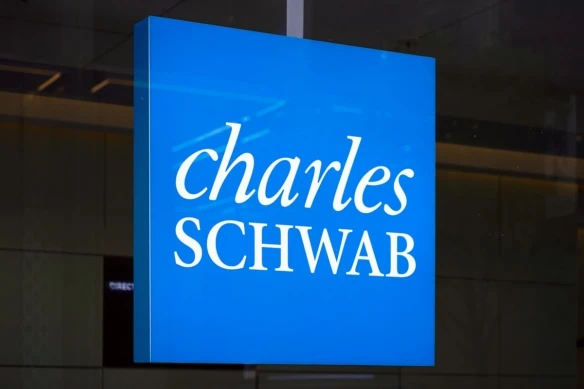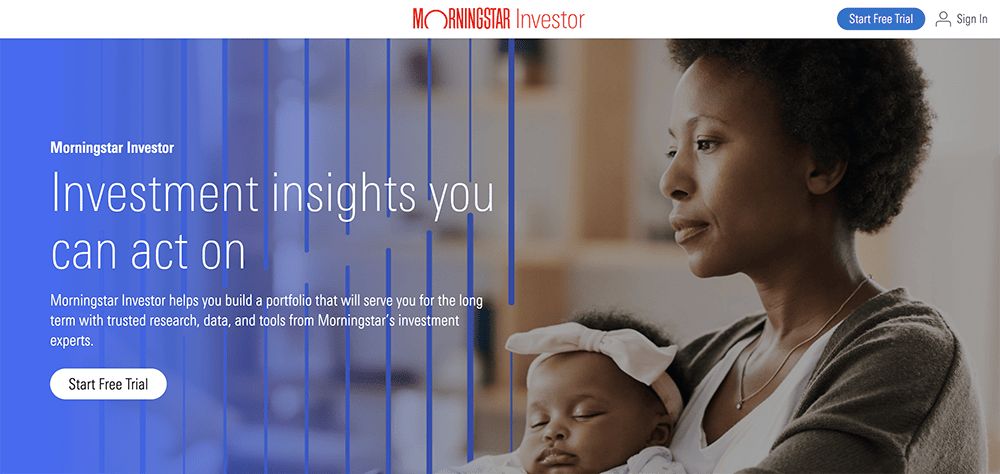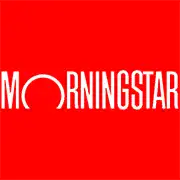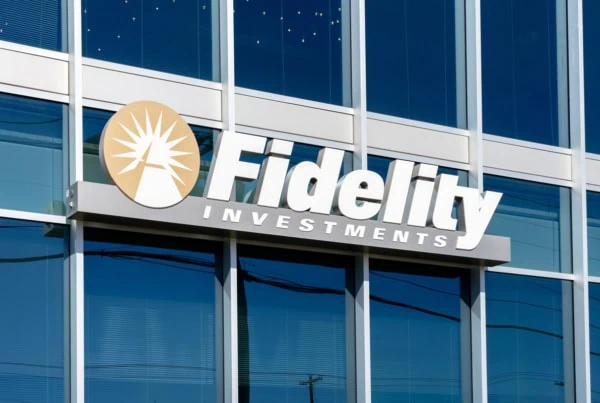Target-date funds are a mainstay in many retirement portfolios and with good reason. They are as close to a “set it and forget it” investment strategy as you’re ever going to find. Target-date funds make the investment process simple by reducing the asset allocation decision to a single factor: your expected retirement date.
Charles Schwab has built a reputation for always putting the client first over the years by keeping costs down, and Schwab was really the first broker to open its doors to the broader investing public.
The broker is also a major player in the world of retirement planning via its family of Schwab target-date funds.
Today, I’m going to introduce you to target-date funds, then I’ll take a look at Schwab’s two lines of target-date funds to see how they might fit into a retirement plan.
What Is a Target-Date Fund?
Target-date funds are a type of mutual fund that has become popular in retirement planning over the past two decades. They go by different names, interchangeably called several things, including:
- lifecycle funds
- age-based funds
- dynamic-risk funds
But the concept at the core is simple: Target-date funds invest in a more aggressive portfolio of mostly equity funds to start, then gradually shift to a more conservative portfolio of mostly bond funds as they approach a target retirement date.
The target retirement dates are intended to be estimates; they don’t have to be super precise. Generally, most mutual fund families will create target-date funds in five-year increments (say, 2025, 2030, 2035, etc.).
For the investor, the math here is simple enough.
Example
Let’s say you’re 30 years old as of 2025, and that you expect to work until age 70. Your expected retirement date would be in the year 2065. So, investing in a target-date fund with a target retirement date of 2065 would make sense. Does your age fall in between five-year increments? That’s OK! Let’s say your retirement date would be in 2067. You could choose either a 2065 fund or a 2070 fund, or own shares in both.
What if your expected retirement age changes? No problem! Target-date funds are normal mutual funds and can be bought or sold as your needs change.
Note that the target-date fund’s allocation to stocks will generally never go to zero. Retirees need growth too, and most should maintain at least a little exposure to the stock market. The beauty of the target-date fund is that it changes your asset allocation to match your risk tolerance as you age—and it does it automatically without requiring you to actually do anything.
Related: 17 Best Investment Apps and Platforms [Free + Paid]
What Is Asset Allocation?
A lot of investors (and particularly young investors) dream of making a killing picking stocks. And that’s fantastic. Stock picking is stimulating and, if done well, can add some zeros to your net worth!
When push comes to shove, however, your asset allocation strategy is far more important than individual stock picking when it comes to meeting your financial goals. Asset allocation sits at the core of target-date funds and, really, at the core of all financial planning.
But what exactly is asset allocation?
Every planner has their own take, but the basic idea is simple. You diversify your portfolio across different asset classes (stocks and bonds, for instance) that, ideally, move at least somewhat independently of each other. A typical asset allocation will include:
- stocks (or stock mutual funds)
- fixed-income investments (bonds, bond funds, or money market funds)
- cash
- alternative assets such as gold, commodities, or real estate
You arrange the parts so that the overall portfolio has a risk and return profile that makes sense for you. And (importantly!) you rebalance the portfolio when the weights to each asset start to divert from your plan.
Example
Let’s say your ideal asset allocation had you 50% allocated to stocks and 50% allocated to fixed income.
First, let’s say the stock market crashes. Your stock weighting has suddenly dropped to just 35%, and your fixed-income investments have jumped to 65% of your portfolio’s worth! You need to rebalance your portfolio to get back to 50/50. You would do that by selling off some of the fixed-income investments and buying some stock.
Now, let’s say instead that the stock market shoots higher, and you find yourself allocated 60% to stocks and 40% to fixed-income investments. If you wanted to rebalance back to 50/50, you would sell some of your stocks and buy new fixed-income investments.
The idea here is to constantly reduce risk and smooth out your returns by buying low and selling high.
Asset allocation within a target-date fund takes it a step further. Apart from regular rebalancing due to market moves, the target-date fund’s asset allocation decisions involve gradually reducing the risk (buying fewer and less risky stocks, and buying more bonds) as the fund gets closer to its target retirement date and its final asset allocation.
Related: 15 Best Investing Research & Stock Analysis Websites
A Look at Schwab Target-Date Funds
Charles Schwab became a household name by offering basic and affordable brokerage services to ordinary people. Schwab was the first real mass-market discount broker and a major trailblazer in lowering trading costs for investors.
Schwab has applied that same focus on the client to its suite of low-cost mutual funds managed in house by Charles Schwab Investment Management. And Schwab target-date funds are an integral part of that offering.
Schwab breaks its offerings into two categories: Schwab Target Funds and Schwab Target Index Funds. I’ll introduce you to each line and go through a few examples of each.
Schwab Target Funds
Schwab Target Funds currently range in five-year increments from 2010 to 2065, with new iterations added over time. And on the equity and fixed income securities subject (asset allocation), it’s exactly what you might expect. Each target-date fund holds a mixture of stock mutual funds and fixed income mutual funds, with the percentage allocated to stocks gradually getting higher the further out the targeted retirement date is.
The idea is, the closer the retiree gets to retirement, the more the funds are designed to deliver income consistent with what the retiree needs to live in their post-salary years.
(Note: Most of the stock and bond mutual funds owned by Schwab target-date funds are managed internally, but Schwab does also regularly incorporate outside managers.)
| Fund | Ticker | Expense Ratio* |
|---|---|---|
| Schwab Target 2010 Fund | SWBRX | 0.25% |
| Schwab Target 2015 Fund | SWGRX | 0.27% |
| Schwab Target 2020 Fund | SWCRX | 0.28% |
| Schwab Target 2025 Fund | SWHRX | 0.32% |
| Schwab Target 2030 Fund | SWDRX | 0.40% |
| Schwab Target 2035 Fund | SWIRX | 0.45% |
| Schwab Target 2040 Fund | SWERX | 0.49% |
| Schwab Target 2045 Fund | SWMRX | 0.52% |
| Schwab Target 2050 Fund | SWNRX | 0.55% |
| Schwab Target 2055 Fund | SWORX | 0.56% |
| Schwab Target 2060 Fund | SWPRX | 0.58% |
| Schwab Target 2065 Fund | SWQRX | 0.58% |
| * Expenses listed are net of waivers, which will remain in place as long as Schwab Asset Management serves as the adviser to the fund. | ||
Let’s compare a handful of the funds.
Schwab Target 2025 Fund (SWHRX)
The Schwab Target 2025 Fund (SWHRX) is designed for an investor who is on the cusp of retirement.
Roughly 55% of the fund’s assets are invested in bonds and cash. This includes the single largest holding, Schwab U.S. Aggregate Bond Index Fund (SWAGX), which accounts for 23% of assets. This part of the portfolio provides the bulk of the fund’s income.
The remaining assets are invested in stocks, with a concentration in domestic large caps, which will provide the bulk of capital appreciation. The Schwab S&P 500 Index Fund (SWPPX) is the biggest stock-focused holding and second-largest holding overall, at 14% of assets.
While SWHRX is heavier in bonds than stocks, a portfolio that’s split 55% bonds/45% stocks still is relatively aggressive for a person starting retirement, at least compared to historic norms. The old financial planning rule of thumb was that your allocation to stocks should be roughly 100 minus your age. So, assuming you retired at the age of 65, a 35% allocation to stocks would be “about right.”
Of course, rules of thumb are not ironclad laws. Some financial planners recommend a more aggressive 120 minus your age as their standard, for instance. In that event, you’d want a 55% allocation to stocks, which would make SWHRX too conservative.
Schwab Target 2045 Fund (SWMRX)
The Schwab Target 2045 Fund (SWMRX) would be appropriate for a person in mid-career, somewhere in their mid-40s.
As you might expect, this target-date fund is more aggressive, at roughly 85% stocks and 15% bonds. Among other noteworthy features, SWMRX’s portfolio has almost 30% of its assets invested in (predominantly developed-market) foreign equities, which tend to lag their American counterparts in growth but offer more dividend income. SWMRX’s largest position, at nearly 20%, is the Schwab S&P 500 Index Fund, followed by the Schwab International Opportunities Fund (SWMIX) at 13%.
Again, a 85% allocation to stocks is a bit aggressive at this age. That’s not necessarily a deal breaker, of course. Looking back, over a 20-to-30-year window, that level of aggression has generally paid off. Just make sure you’re comfortable with a feisty allocation, especially if you’ve already managed to amass a sizable nest egg that doesn’t necessarily require high aggression to reach your retirement “number.”
Schwab Target 2065 Fund (SWQRX)
Finally, let’s take a look at the Schwab Target 2065 Fund (SWQRX).
This is designed for that recent college graduate looking to kickstart their retirement savings. The allocation is aggressive, with 97% of the fund invested in stocks. Apart from the expectedly high allocation to the Schwab S&P 500 Index Fund (~20%), SWQRX also has heavy exposure to developed international and emerging markets.
Also worth mentioning? Target-date funds rarely hold sector-specific funds. However, Schwab’s target-date line includes exposure to real estate investment trusts (REITs) via the Schwab Global Real Estate Fund (SWASX). SWQRX specifically allocates 6% of its assets to the fund, which is greater than you’ll see in Schwab Target Funds that are closer to their target date.
A worker just starting their career will generally not have a lot of money to invest. So, averaging into an aggressive target-date fund like this is generally appropriate. With four decades or more until retirement, you can afford to take risk, as you have plenty of time to make up losses. And given the modest sums you’re likely investing to get started, you’re not putting a substantial nest egg at risk.
Related: 7 Best Stock Recommendation Services [Stock Tips + Picks]
Schwab Target Index Funds
The difference between Schwab Target Funds and Schwab Target Index Funds isn’t quite what it seems. Both series of target-date funds are actively managed—that is, human managers determine the blend of holdings in each and every one of these mutual funds.
However, Schwab Target Funds hold a mix of actively managed and index mutual funds (index funds try to replicate a rules-based index, like the S&P 500). But Schwab Target Index Funds get all of their stock and bond exposure exclusively from index exchange-traded funds (ETFs).
If you value low cost above all else, Schwab Target Index Funds are the better option. Because they invest solely in low-cost Schwab ETFs, these target-date funds have some of the lowest expense ratios in the business, at just 0.08%.
| Fund | Ticker | Expense Ratio |
|---|---|---|
| Schwab Target 2010 Index Fund | SWYAX | 0.08% |
| Schwab Target 2015 Index Fund | SWYBX | 0.08% |
| Schwab Target 2020 Index Fund | SWYDX | 0.08% |
| Schwab Target 2025 Index Fund | SWYEX | 0.08% |
| Schwab Target 2030 Index Fund | SWYFX | 0.08% |
| Schwab Target 2035 Index Fund | SWYGX | 0.08% |
| Schwab Target 2040 Index Fund | SWYHX | 0.08% |
| Schwab Target 2045 Index Fund | SWYLX | 0.08% |
| Schwab Target 2050 Index Fund | SWYMX | 0.08% |
| Schwab Target 2055 Index Fund | SWYJX | 0.08% |
| Schwab Target 2060 Index Fund | SWYNX | 0.08% |
| Schwab Target 2065 Index Fund | SWYOX | 0.08% |
| * Expenses listed are net of waivers, which will remain in place as long as Schwab Asset Management serves as the adviser to the fund. | ||
Let’s take a look at the three Schwab Target Index Funds that match the retirement dates of the Schwab Target Funds above.
Schwab Target 2025 Index Fund (SWYDX)
The Schwab Target 2025 Index Fund (SWYDX) is allocated similarly to the Schwab Target 2025 Fund, splitting its assets roughly 55/45 between bonds and stocks. Right now, 42% of the portfolio is invested in the Schwab U.S. Aggregate Bond ETF (SCHZ), and another 29% is allocated to the Schwab U.S. Large Cap ETF (SCHX). It also holds funds focused on international equities, short-term Treasuries, Treasury Inflation-Protected Securities (TIPS), real estate investment trusts, and small-cap stocks.
Schwab Target 2045 Index Fund (SWYHX)
The Schwab Target 2045 Index Fund (SWYHX) is more aggressive than SWYDX, and on par with its actively managed 2045 counterpart SWMRX, by allocating roughly 85% of assets to stocks. The Schwab U.S. Large Cap ETF accounts for nearly half of the portfolio’s weight by itself. A large allocation to large caps also means a large allocation to technology stocks, which make up 23% of the portfolio. That’s not necessarily a bad thing, of course, as U.S. tech has been a major engine of growth over the past 20 years. But tech shares are also notoriously volatile and occasionally get the short end of the stick, as they did for a stretch during 2025’s almost-bear market.
Schwab Target 2065 Index Fund (SWYOX)
Finally, let’s look at the Schwab Target 2065 Index Fund (SWYOX). SWYOX is unsurprisingly loaded with equities: At a 97% allocation to stocks, this is about as aggressive as a target-date fund can get. Just like in the Schwab Target 2065 Fund, SWYOX allocates a massive portion of assets (more than 50% currently) to SCHX. It also has a healthy allocation to developed and emerging markets, at nearly a third of assets.
Related: The 7 Best Dividend ETFs [Get Income + Diversify]
Learn More About These and Other Funds With Morningstar Investor
If you’re buying a fund you plan on holding for years (if not forever), you want to know you’re making the right selection. And Morningstar Investor can help you do that.
Morningstar Investor provides a wealth of information and comparable data points about mutual funds and ETFs—fees, risk, portfolio composition, performance, distributions, and more. Morningstar experts also provide detailed explanations and analysis of many of the funds the site covers.
With Morningstar Investor, you’ll enjoy a wealth of features, including Morningstar Portfolio X-Ray®, stock and fund watchlists, news and commentary, screeners, and more. And you can try it before you buy it. Right now, Morningstar Investor is offering a free seven-day trial. You can check out the current deal, as well as discounted rates for students and teachers, in our details box below.
- Morningstar Investor offers expert research, investing analysis, and advisor-grade portfolio management tools that are tailor-made for buy-and-hold investors.
- Morningstar is one of the most prized sources of mutual fund and exchange-traded fund (ETF) data in the world.
- How does your portfolio stack up? Put it through Morningstar's Portfolio X-Ray, which will provide insights such as whether you have too many overlapping holdings or whether you're paying too much in fees.
- Special Offer 1: Click our sign-up link to receive $50 off your first year of Morningstar Investor. (Annual plan only.)
- Special Offer 2: Students receive one year of Morningstar Investor access for just $25!
- Special Offer 3: Teachers receive a 60% discount on Morningstar Investor access.
- Top-flight fund research and analysis
- Portfolio management tool
- Powerful screener
- Watchlists
- Tailored news and commentary
- Below-average charting
- High monthly billing rate
Frequently Asked Questions (FAQs)
How do Schwab target-date funds compare to those from Fidelity, Vanguard, and others?
As a general rule, your experience with Schwab Target Funds is going to be very similar to what you would get in target-date mutual funds managed by other fund sponsors like Fidelity or Vanguard. Most offer low-cost access to an asset allocation model that glides from more aggressive to more conservative as you reach your targeted retirement date.
But there can be differences, and those differences matter.
Let’s compare the Schwab Target 2040 Index Fund (SWYGX) to the Vanguard Target Retirement 2040 Fund (VFORX) and Fidelity Freedom Index 2040 Fund (FBIFX). All have rock-bottom expense ratios of 0.08%, 0.08%, and 0.12%, respectively. That’s close enough that fees alone aren’t going to move the needle much in terms of returns.
But the asset allocations can be noticeably different.
- SWYGX: 78% stocks (55% U.S. stocks, 23% foreign stocks), 22% in fixed income and cash
- VFORX: 74% stocks (44% in U.S. stocks, 30% foreign stocks), 26% in fixed income and cash
- FBIFX: 83% stocks (49% U.S. stocks, 34% foreign stocks), 17% in fixed income and cash
In this example, Schwab’s target-date fund is less aggressive than the Fidelity target-date fund but more aggressive than the Vanguard target-date fund. That’s neither good nor bad. But you should measure the relative aggressiveness against your own investment objectives when choosing among the target-date funds.
Should I always buy the target-date fund that corresponds most closely to my estimated retirement year?
In a word, no. Or at least not necessarily.
Target-date mutual funds are designed to make the asset allocation process simple. And they do. But this simplicity is made possible by making assumptions about your investment objectives and risk tolerance based on only one real factor: your age.
You might be significantly more aggressive or conservative than your age would suggest for any number of reasons. Perhaps you have a guaranteed inheritance that gives you the flexibility to be more aggressive. Or perhaps you have immediate cash needs or a sick family member that requires you to be more conservative.
As a very general rule, target-date mutual funds give you a great starting point. But you should always consider your overall financial situation and use the target funds in that context.
Are indexed target-date funds better than actively managed funds?
This is an eternal debate, and the answer is: “It depends.”
Some active managers effectively beat their indexed competition even after the higher fees, trading expenses and tax considerations are taken into account. Most, however, do not. Over the past two decades, there have been only three years—2005, 2007, and 2009—in which a majority of large-cap managers beat the S&P 500. So, as a general rule, it is safe to assume that indexed target-date funds will be your better option over time.
Furthermore, active management can muddle the waters of a target date strategy, particularly if the active manager regularly makes defensive moves, such as going to cash. The percentage of the portfolio you have exposed to stocks is determined by the number of years until the retirement date, and active management can potentially skew your weights outside of the target.
Want to talk more about your financial goals or concerns? Our services include comprehensive financial planning, investment management, estate planning, taxes, and more! Schedule a call with Riley to discuss what you need, and what we can do for you.
Related:















